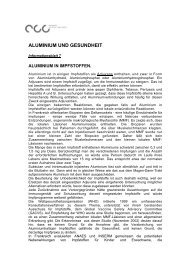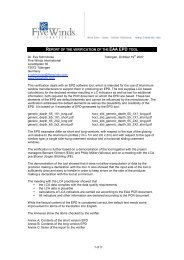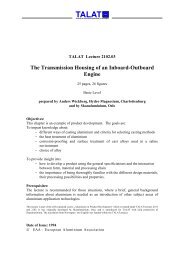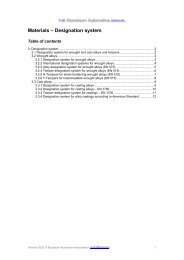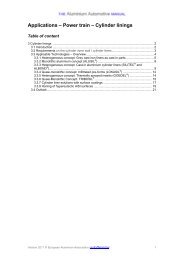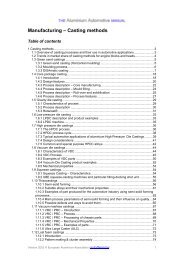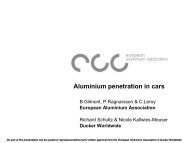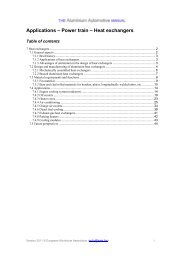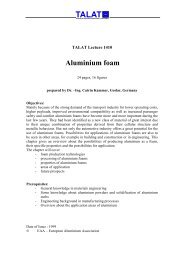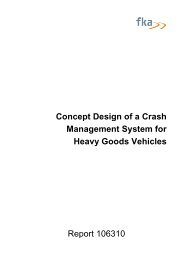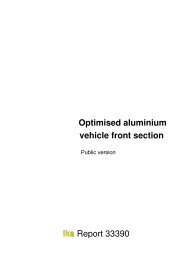aluminium in commercial vehicles - European Aluminium Association
aluminium in commercial vehicles - European Aluminium Association
aluminium in commercial vehicles - European Aluminium Association
Create successful ePaper yourself
Turn your PDF publications into a flip-book with our unique Google optimized e-Paper software.
122 EUROPEAN ALUMINIUM ASSOCIATION ALUMINIUM IN COMMERCIAL VEHICLES CHAPTER VIII<br />
9. Surface preparation before weld<strong>in</strong>g<br />
For quality welds it is recommended<br />
to mach<strong>in</strong>e the edges<br />
(see section 3.7) of sheet to be<br />
welded after water jet, plasma or<br />
laser cutt<strong>in</strong>g to remove this<br />
rough surface with a thick oxide<br />
layer and also with micro cracks<br />
<strong>in</strong> order to avoid weld defects<br />
such as cracks and oxide <strong>in</strong>clusions.<br />
The same should be done<br />
for plate with thickness over 10<br />
mm that has been sheared.<br />
There is a great risk of cracks <strong>in</strong><br />
the short transverse direction,<br />
where a removal of 2 mm via<br />
mill<strong>in</strong>g or rout<strong>in</strong>g is adequate.<br />
Weld<strong>in</strong>g of tipper body (SCHMITZ)<br />
The metal to be welded must be<br />
dry and without contam<strong>in</strong>ation<br />
of any grease or other products<br />
that evaporate under the action<br />
of the arc. To achieve this clean<br />
surface, the pieces to be welded<br />
should be brought <strong>in</strong>to the workshop<br />
two days before production.<br />
This will allow condensation<br />
that might occur when the temperature<br />
<strong>in</strong> the storage area is<br />
lower than <strong>in</strong> the workshop to<br />
dry off.<br />
Immediately before weld<strong>in</strong>g, the<br />
edges to be jo<strong>in</strong>ed and their surround<strong>in</strong>gs<br />
must be properly<br />
degreased us<strong>in</strong>g a solvent such<br />
as acetone or <strong>in</strong>dustry alcohol.<br />
Avoid trichlorethylen, which<br />
transforms under the effect of<br />
the arc <strong>in</strong>to the poisonous gas<br />
phosgene. When the solvent on<br />
the surface has evaporated, a<br />
further clean<strong>in</strong>g with a sta<strong>in</strong>less<br />
steel wire brush (hand-operated<br />
or rotary) is recommended.<br />
Outdoor weld<strong>in</strong>g is not advisable.<br />
If it cannot be avoided, the<br />
weld<strong>in</strong>g environment must be<br />
screened off.



